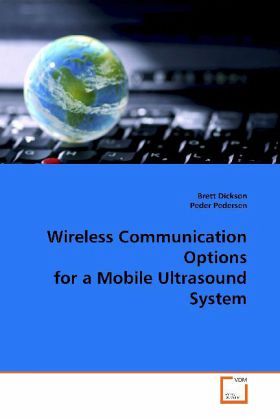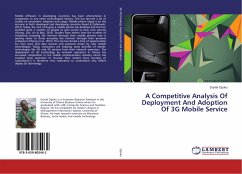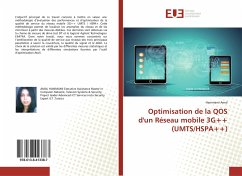
Wireless Communication Options for a Mobile Ultrasound System
Versandkostenfrei!
Versandfertig in 6-10 Tagen
52,99 €
inkl. MwSt.

PAYBACK Punkte
26 °P sammeln!
This work evaluates the feasibility of wirelessreal-time ultrasound image streaming, for use indisaster, rescue and medical transport. Relevanttransmission parameters (data rate, packet loss,jitter, and latency) and network protocols weremeasured for 3 wireless networks: 802.11g ad-hocnetwork, 3G cellular broadband network, and InmarsatBGAN satellite network. In addition, H.264 compressedechocardiographic image loops were transmitted inreal-time over the 3 wireless networks, withspecified image quality (VGA and QVGA) and specifiedframe rates (10, 15, 20 and 30 frames per second),and then uncom...
This work evaluates the feasibility of wireless
real-time ultrasound image streaming, for use in
disaster, rescue and medical transport. Relevant
transmission parameters (data rate, packet loss,
jitter, and latency) and network protocols were
measured for 3 wireless networks: 802.11g ad-hoc
network, 3G cellular broadband network, and Inmarsat
BGAN satellite network. In addition, H.264 compressed
echocardiographic image loops were transmitted in
real-time over the 3 wireless networks, with
specified image quality (VGA and QVGA) and specified
frame rates (10, 15, 20 and 30 frames per second),
and then uncompressed and recorded.
Physicians with expertise in medical ultrasound
subsequently rated the diagnostic content of the
transmitted image stream relative to the original
image loops. The results showed that with efficient
video compression, diagnostically valuable wireless
streaming of ultrasound video can be carried out.
This work will benefit individuals and organizations
in the field of telemedicine and remote medical
imaging as well as those in the wireless community.
real-time ultrasound image streaming, for use in
disaster, rescue and medical transport. Relevant
transmission parameters (data rate, packet loss,
jitter, and latency) and network protocols were
measured for 3 wireless networks: 802.11g ad-hoc
network, 3G cellular broadband network, and Inmarsat
BGAN satellite network. In addition, H.264 compressed
echocardiographic image loops were transmitted in
real-time over the 3 wireless networks, with
specified image quality (VGA and QVGA) and specified
frame rates (10, 15, 20 and 30 frames per second),
and then uncompressed and recorded.
Physicians with expertise in medical ultrasound
subsequently rated the diagnostic content of the
transmitted image stream relative to the original
image loops. The results showed that with efficient
video compression, diagnostically valuable wireless
streaming of ultrasound video can be carried out.
This work will benefit individuals and organizations
in the field of telemedicine and remote medical
imaging as well as those in the wireless community.












